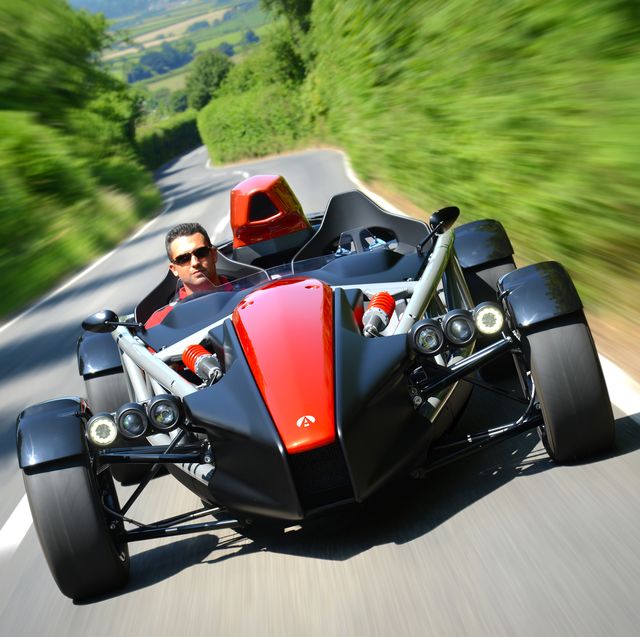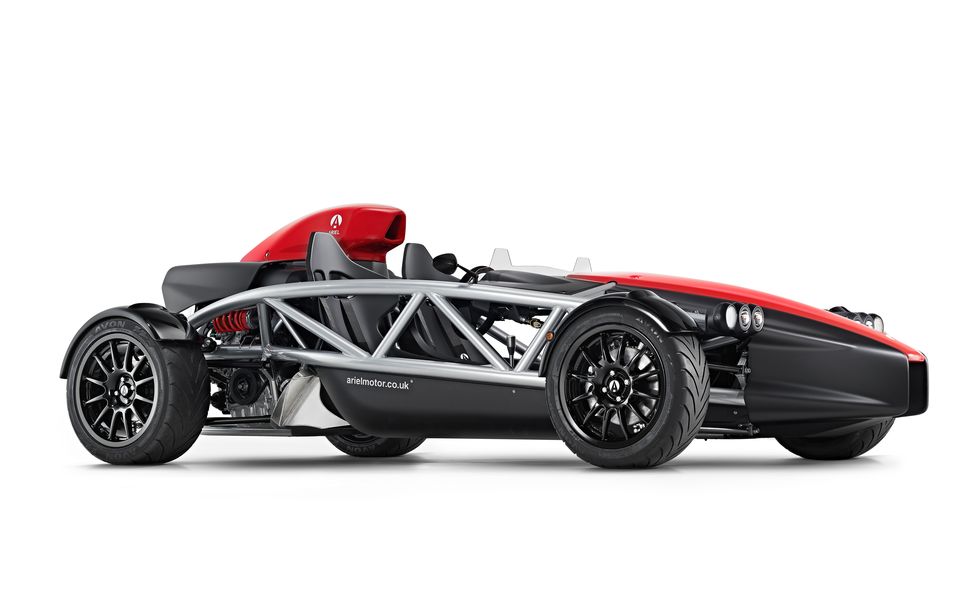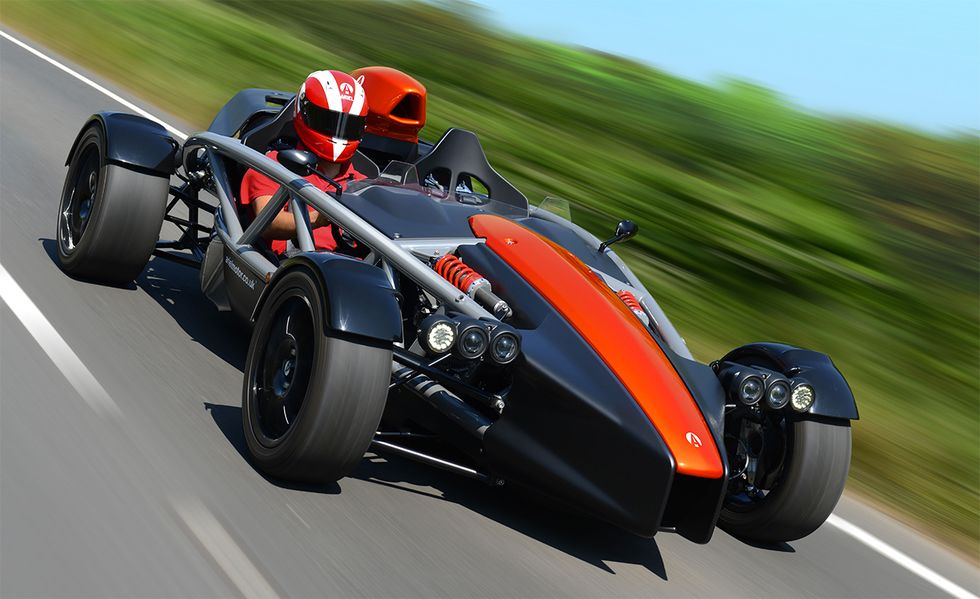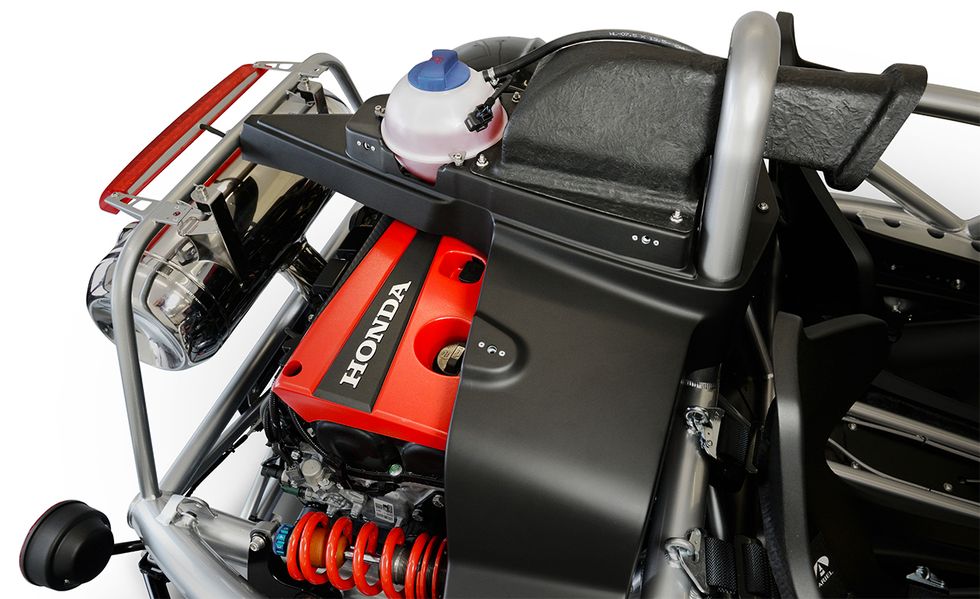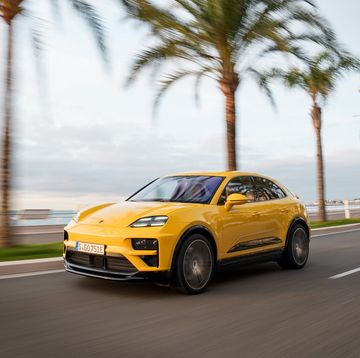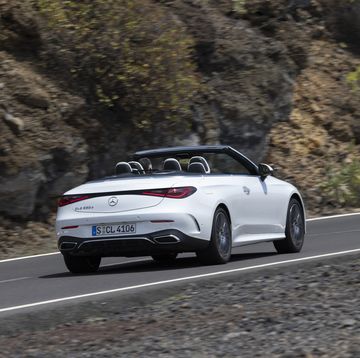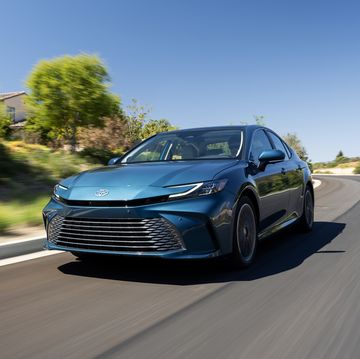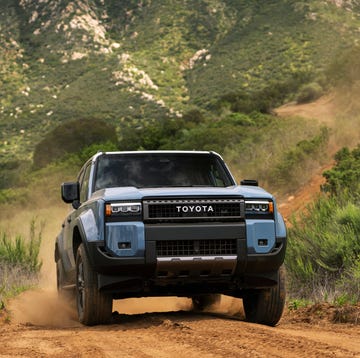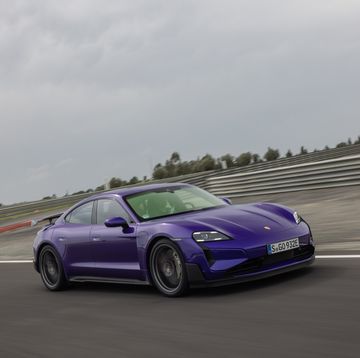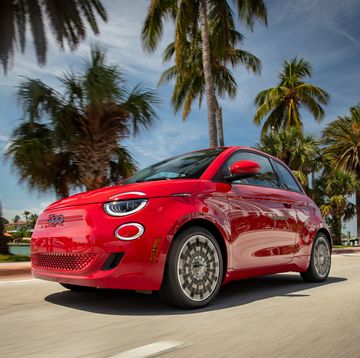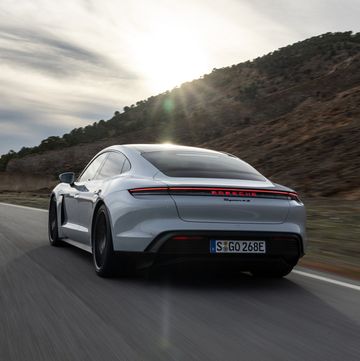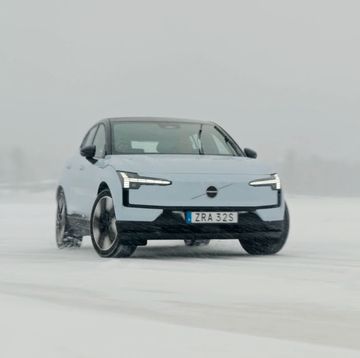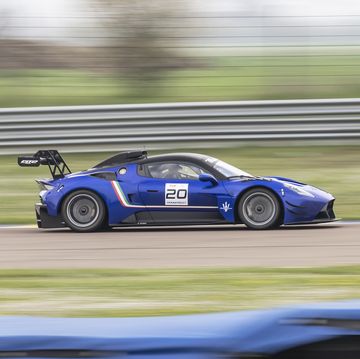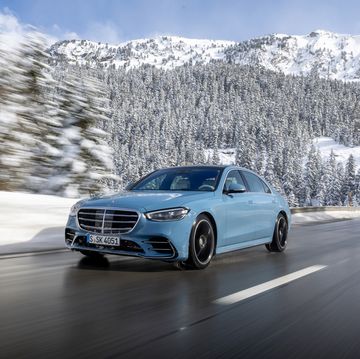The challenge with minimalism is not to overdo it: remove everything superfluous without getting rid of the important bits. Where that line falls depends on an individual's love of comfort or appreciation for austerity. Does a car need to have a heater? What about a windshield? A roof? Bodywork capable of putting up some resistance to passing airflow?
The Ariel Atom is a car for those happy to answer all of those questions in the negative. The first version, conceived two decades ago by British car designer Simon Saunders, was essentially a four-wheeled motorbike. It's a vehicle with a tubular-metal spaceframe that has no function beyond providing the necessary mounting points for its mechanical components and a protected space for two occupants.
The fundamentals have remained unchanged, and this Atom is still absolutely free from frills or distractions, but the car itself has evolved steadily alongside the company that builds it. Saunders now runs Ariel with his two sons, and the company employs 26 people at its factory in Crewkerne, Somerset, England, with TMI Autotech in Virginia building cars for the United States market under license. It has diversified into other areas, notably the Nomad off-roader and the Ace motorcycle, but the Atom remains the heart of the company's business. This latest version is the fourth generation, and the company says the only components carried over are the brake pedal, clutch pedal, and gas cap.
The biggest change sits under the plastic cover at the back of the car: the turbocharged 2.0-liter inline-four, the same engine that powers the Honda Civic Type R. Ariel previously used a naturally aspirated Honda four-cylinder, with an optional supercharger, but the new Atom will have the Type R engine as standard. Beyond a custom engine computer that Ariel says lets the mill produce 320 horsepower at 6000 rpm (up from 306 horses at 6500 revs), it is effectively identical to the engine in the Civic and turns the rear wheels through the hatchback's gearbox with unchanged ratios. Weight has increased by about 45 pounds over the last-generation car, but with fluids Ariel says this Atom still weighs just under 1350pounds.
There Will Be Rain
As seems to be traditional for our first experience of new Ariel products, we arrive at the company's modest factory in Crewkerne under a gray sky and with the threat of imminent rain. Protective clothing is important to drive an Atom, with layers chosen to provide required levels of both warmth and waterproofing. In the U.S., street-legal Atoms are equipped with a windshield, but in Europe most have nothing more than a Perspex aero screen to break up airflow. You don't need to wear a full-face helmet to drive one, but you're likely to ingest a significant quantity of bugs and road debris if you choose not to.
The cockpit is empty and uncluttered enough to make most race cars seem positively baroque. The seats are plastic shells; padding is provided by clothing and subcutaneous fat. The steering wheel has a microfiber-wrapped rim, and behind it is a digital display screen set into a small console that contains all controls other than the pedals, gearshift, and parking brake. This display is clear and easy to understand, but there's a more compelling view to be had by casting your eyes downward to see the connection between the steering column and the rack that is mounted to the floor, as well as the view of the front control arms and steering knuckles. There's no inside rearview mirror—the engine's high-mounted air intake would block it—and you soon realize it is important to adjust the small side mirrors before fastening the six-point harnesses, which are restrictive enough to lock everything out of reach save for the primary controls.
Sensory Overload
Although the car has evolved in significant ways, the fundamentals of the Atom driving experience remain uncorrupted. The motorcycle analogy holds true through pretty much everything you do with the car, from the fizzing vibration that comes through the structure when the engine is running to the ability you soon develop to gauge velocity through rising air pressure on one's chest and head.
This Atom is happier to travel slowly than any of its predecessors. Control weights are light, forward visibility is outstanding (you can gauge the wheels' proximity to curbs simply by a direct line of sight), and the engine's tractable low-down delivery and slick gearshift action are well suited to gentle use, with the lovely-feeling shift lever coming from a Japan-market Honda S660. This Atom also has been given a greatly improved turning circle. In earlier generations, it ran out of space embarrassingly easily when attempting tighter maneuvers.
The sensory overload that comes from its open construction means the Atom feels fast even when traveling slowly. But it feels considerably faster when properly unleashed. The bespoke ECU allows the engine to be given three selectable power outputs by limiting turbo pressure. Setting 1 equates to 220 horsepower, 2 unleashes 290, and 3 lets loose all 320. Even in 1, the Atom feels blisteringly fast; 2 gives acceleration that seems to rival a supercar; and 3 has it doing a convincing impression of a sport bike.
Like a potent motorcycle, the Atom devours its gearing with a savage joy when worked hard and requires sharp reactions to keep up with its need for longer-legged ratios. At full throttle in lower gears, there is less than a second between the first LED shift light and the engine running hard into its rev cut. But while it can shorten straights like a two-wheeler, the Atom requires a similarly cautious approach to slowing down. There's no ABS, and the track-biased Avon ZZR rubber struggles to digest wet surfaces under hard braking. The 4's suspension has been optimized to reduce dive and squat, and the car stays impressively flat under acceleration and deceleration.
Despite the damp conditions, the tires proved happier when asked to produce lateral grip. Our drive took in a route across the counties of Somerset and Dorset, linking several roads recommended by Ariel staff, and the Atom 4 seemed to enjoy them all, gripping hard and turning accurately with less darty steering responses than previous-generation cars. The ride is firm, especially at low speeds, but the Ariel deals with bumps and compressions at higher speeds without losing composure or bottoming out.
Traction proved more of an issue at lower speeds. On tighter and wetter corners, the accelerator had to be treated respectfully to stop the rear from sliding, although in this Atom oversteer seems to be more easily corrected than in its predecessors. On a racetrack, where we hope to take one soon, we imagine it will be a riot.
Britain has long specialized in stripped-down sports cars, even before Lotus's Colin Chapman coined the famous phrase about adding lightness. But even after two decades and on its fourth generation, the Atom still feels genuinely radical, one of a few cars that is almost completely unlike anything else. Sales in the U.K. and Europe have already begun, although we're told that production of the largely identical U.S. version will begin next year. We look forward to introducing it to some warmer, drier climes.
Specifications
Specifications
2019 Ariel Atom 4
VEHICLE TYPE
mid-engine, rear-wheel-drive, 2-passenger, 0-door convertible
ESTIMATED BASE PRICE
$85,000
ENGINE TYPE
turbocharged and intercooled DOHC inline-4, aluminum block and head, direct fuel injection
Displacement
122 in3, 1996 cm3
Power
320 hp @ 6500 rpm
Torque
310 lb-ft @ 3000 rpm
TRANSMISSION
6-speed manual
DIMENSIONS
Wheelbase: 94.1 in
Length: 138.6 in
Width: 74.0 in
Height: 44.2 in
Cargo volume: 0 cu ft
Curb weight (C/D est): 1350 lb
PERFORMANCE (C/D EST)
Zero to 60 mph: 2.8 sec
Standing ¼-mile: 11.0 sec
Top speed: 160 mph
Our man on the other side of the pond, Mike Duff lives in Britain but reports from across Europe, sometimes beyond. He has previously held staff roles on U.K. titles including CAR, Autocar, and evo, but his own automotive tastes tend toward the Germanic: he owns both a troublesome 987-generation Porsche Cayman S and a Mercedes 190E 2.5-16.
